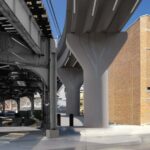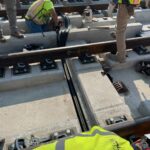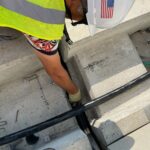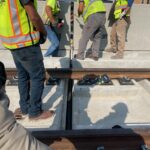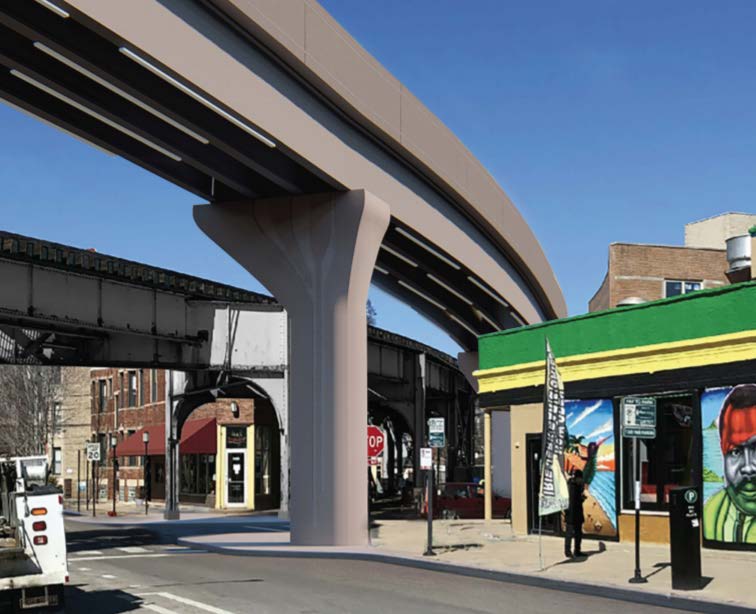
In February 2018, the Chicago Transit Authority embarked on its largest capital project in history, awarding a $1.2 billion design-build project to a joint venture between Walsh Construction and Fluor Contracting. Stantec came on board as the lead engineering firm, with Systra International Bridge Technologies leading bridge design. This groundbreaking project involves the construction of twin 1.3-mile-long elevated guideway bridges, supporting two tracks of the Red and Purple Lines, with the first bridge completed at the end of 2022 and the entire project expected to finish by 2025.
The undertaking showcased the use of four high-load multi-rotational disc bearings, designed to support a vertical service load of 600 kips and capable of handling a horizontal load that equals 85% of the vertical load. These bearings are an innovation in their field, with a design for a transverse displacement of 2 inches and a longitudinal displacement of 0.125 inches, alongside a service rotation capacity of 0.015 radians. Furthermore, the project featured approximately 5,000 linear feet of R.J. Watson’s Silicoflex, a preformed silicone joint seal. This product was chosen for its reliability and performance, with joint openings ranging from 1.5 inches to 6 inches wide at the time of installation and designed to accommodate a total displacement between 3 ¼ inches and 5 inches.
The Red and Purple Modernization (RPM) corridor, spanning 9.6 miles from Belmont to Howard, is a testament to the project’s impact on Chicago’s most densely populated areas, including Lakeview and the 44th Ward. The RPM program is pivotal in modernizing and rebuilding much of the century-old infrastructure to accommodate current and future increases in ridership, especially during rush hours. In the 44th Ward, this includes the complete reconstruction of the Red and Purple Line track structures from Belmont to Cornelia/Newport. The program also involves strategic changes to the track layout between Addison and Belmont to facilitate the dismantlement and replacement of the westernmost tracks, with a temporary structure ensuring the continuation of Loop-bound Brown Line service.
A key achievement of the RPM Program is the construction of the Red-Purple Bypass directly north of Belmont Station. This bypass has successfully eliminated a bottleneck, allowing for the addition of up to eight more Red Line trains per hour during peak periods and serving up to 7,200 more customers per hour. By increasing Red and Purple line train speeds by 60 percent through this intersection, the bypass significantly enhances the efficiency of train operations and customer travel times, saving half a million travel hours annually.
R.J. Watson is proud to have contributed to this transformative project, showcasing our commitment to innovation and excellence in the field of bridge construction and maintenance. Our participation not only highlights our expertise but also our dedication to improving urban infrastructure and transportation efficiency for communities.

